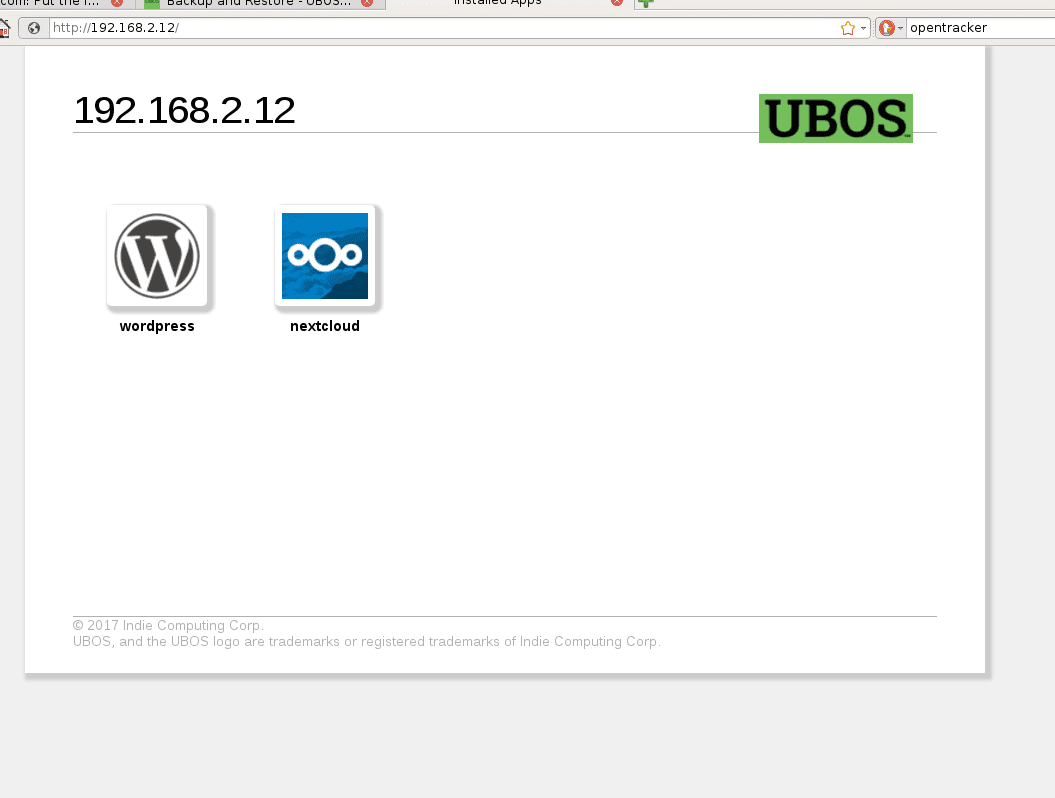UBOS Linux Beta 14 release, Linux distro for personal servers and Indie IoT devices

UBOS Linux is an Arch Linux based server distribution. UBOS, a new Linux distro, in order to make it simple to set up and maintain a Linux server that runs common web applications and keeps data under control of the owner of the server. It’s our vision that everybody should have a server in their home one day that stays independent of the big commercial and governmental overlords.
UBOS Linux Feature
- With UBOS Linux, web applications can be installed, and fully configured with a single command. This takes out the drudgery of software installation and configuration on servers and allows much more people to run their own websites.Wanting to run a, say, Python app should not require users having to know anything about Python; same about other languages, frameworks, databases and the like. You don’t care about which language was used to create apps on your smartphone either.
On UBOS Linux, unlike other Linux distros, a typical user never has to edit a Linux-level configuration file (say in
/etc/), provision a database, start or stop services, and the like. - UBOS fully automates app management at virtual hosts. You can run, say, five different instances of WordPress with different plugins and themes at five different hostnames on the same computer, or even at the same hostname (e.g. example.com/blog1, example.com/blog2 etc.). You can deploy all of them individually or at the same time with a single command.UBOS can now also automatically obtain SSL/TLS certificates from Letsencrypt.org.
- UBOS pre-installs and pre-configures networking and other infrastructure, so it is ready to be used as soon as it has booted. For example, not only does UBOS boot as a DHCP client, but also runs a web server with a default web application behind a preconfigured firewall. This allows the user to use UBOS immediately, with little to no systems configuration.On other distros, this is an open-ended manual process requiring substantial systems administration knowledge and even more patience.
- Systems that have two Ethernet interfaces can be turned into a home router/gateway with a single command. In this “gateway” configuration, UBOS automatically sets up network masquerading, a firewall, a local DNS and DHCP server.Apps installed on the system can either be only accessible on the local-area network or also on the public internet.
- UBOS can backup or restore all, or any subset of installed applications on a device, including their entire configuration (like TLS) in a single command. Optionally, backups may be encrypted and/or automatically uploaded to Amazon S3.
- UBOS “full-stack testing” ensures that core UBOS operating system, networking, middleware, and apps, are all tested with each other before a new UBOS release is pushed out. This reduces the likelihood that, for example, an upgrade to the database or web server will break a web application.Some Linux distros perform similar testing with desktop applications, but we are not aware of any other distros that do it for server-side, web applications.
- Unlike most other distros, UBOS does not try to provide every conceivable package. Instead, we try to provide a few packages as possible by eliminating alternate packages that provide overlapping functionality. For example, we picked Apache over nginx (due to broader software support). To support the goals of UBOS, this has great advantages: it makes testing much simpler because UBOS has far less code, and far fewer configurations need to be tested. This, in turn, makes application developers’ lives easier and installations less brittle.Users who wish to use other packages not provided through UBOS can still obtain those from the Arch Linux repositories. UBOS is a (compatible) derivative of Arch Linux.
- UBOS uses a rolling-release development model (see Wikipedia page). UBOS never requires major upgrades; instead, updates are made available incrementally. This ensures that devices can continue to be updated and keep running for the long-term.
- UBOS itself is all free/libre and open software, so there’s no proprietary lock-in and you can keep us honest by reviewing our code.There is one exception: some hardware platforms, notably some versions of the ARM, require “blobs” to function. (The Free Software Foundation provides a great description.) UBOS bundles those blobs in order to be able to support those platforms. Of course, if you don’t like proprietary blobs, only use UBOS on platforms where they aren’t required. In, of course, you can install and run whatever software you like, in addition to what is available through the official UBOS repositories.
UBOS Linux Beta 14 release. This version has been focused on:
- It’s now easy to use a separate “big data disk” (like an external USB disk on a Raspberry Pi, or an extra big volume on Amazon EC2). This makes it much simpler for UBOS users that have a lot of data on their device.
- Perform backup and system upgrade in a single step for even less work and worry when upgrading everything from OS to apps.
- Create sites from templates files, and only fill in the information that wasn’t provided already in the template.
- There’s a new command for concisely displaying the networking configuration.
- Developers can now write installation scriptlets in any language; there is no more need to write Perl wrappers.
- … plus the usual hundreds of package upgrades, feature improvements and bug fixes.
- More…





